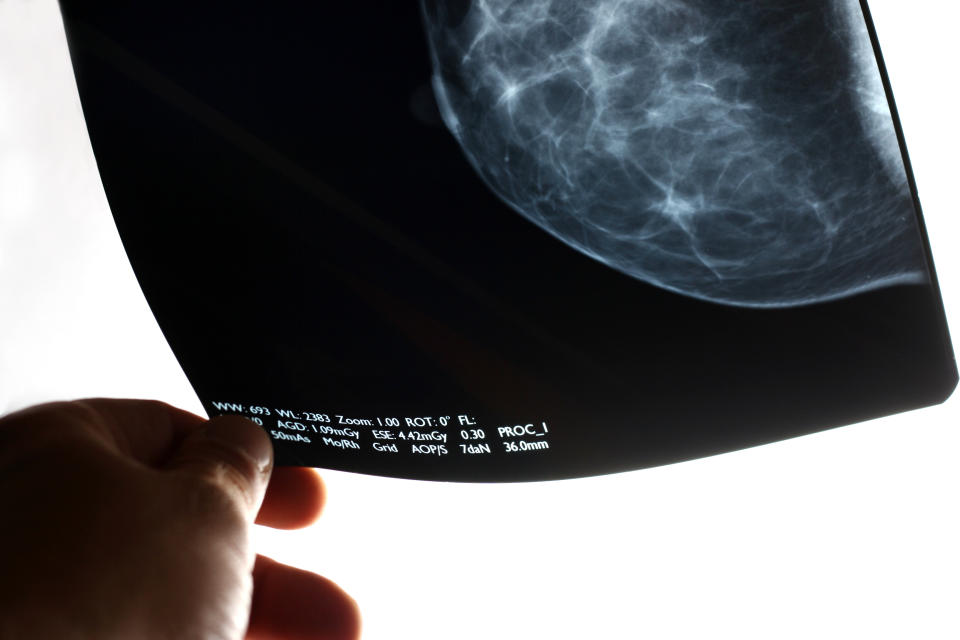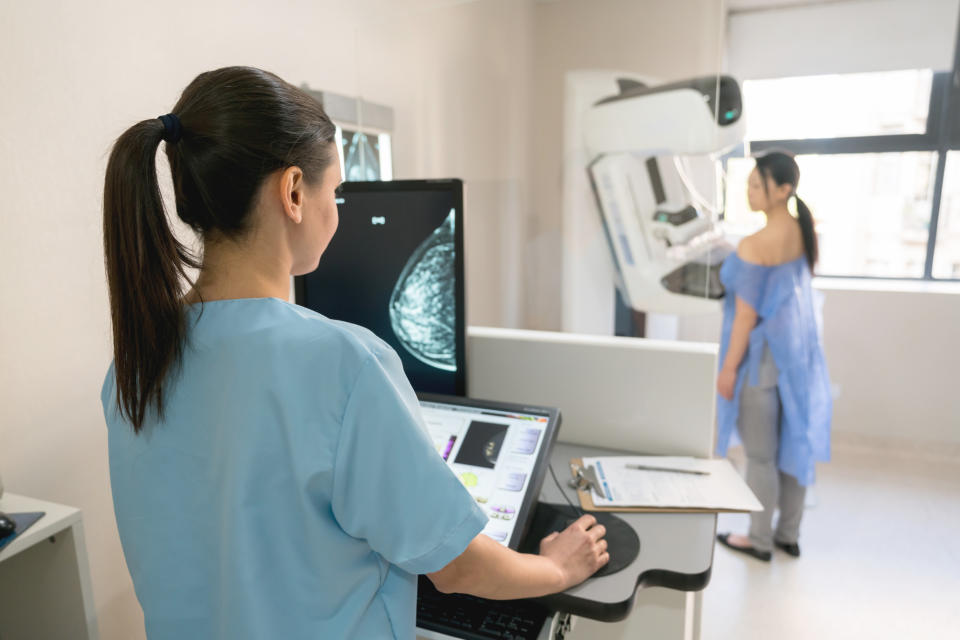Women Should Now Start Getting Mammograms at 40, Per New Guidelines

In a major update to breast cancer screening guidelines, the United States Preventive Services Task Force (USPSTF) now advises that women start getting regular mammograms 10 years earlier than previously recommended. Here’s everything you need to know about this change, including how experts came to this conclusion.
USPSTF is an independent body of medical experts that publishes influential guidelines for cancer prevention protocols. As The New York Times reported, the task force issued a draft of new advice for breast cancer screenings in May 2023 and released the official, finalized recommendations in April 2024.
Prior to the update, the USPSTF recommended that women at average risk for breast cancer get mammograms every other year beginning at age 50. Now, USPSTF recommends they start the biennal exams at 40.
This new advice applies to people who have a family history of breast cancer and who have dense breasts. It does not apply to people who have already had breast cancer or who have certain genetic mutations, like the BRCA1 and BRCA2 genes, that predispose them to developing it.
The update marks an apparent reversal in USPSTF’s thinking. In 2009, the task force actually raised the recommended age from 40 to 50 due to concerns that unnecessary breast cancer screenings and biopsies would do more harm than good. Given a number of concerning recent trends in breast cancer cases and deaths, experts are now amending their advice.
More from SheKnows
Best of SheKnows
Why did experts lower the recommended age for women to begin getting mammograms?

Tuesday’s revision is a response to an alarming rise in breast cancer cases among women in their 40s — and the disproportionately high breast cancer mortality rate for Black women.
“Black women are 40 percent more likely to die from breast cancer and too often get deadly cancers at younger ages,” USPSTF wrote in its new guidelines. “Ensuring Black women start screening at age 40 is an important first step, yet it is not enough to improve the existing inequities.”
A JAMA report published this April posited lowering the recommended age for Black women exclusively. However, the task force ultimately chose to update its recommendations for women of all races and ethnicities. They hope this will help more women get diagnosed earlier, increasing their chances of survival.
“If all women followed our new recommendation, we could reduce mortality from breast cancer in the U.S. by about 20 percent,” Dr. Carol Mangione, a previous chair of the task force and co-author of the updated advice, told NPR in 2023.
Breast cancer is the most common cancer globally.

Breast cancer is the second most common cancer for women in the U.S., according to the CDC, and the most common cancer globally, per the World Cancer Research Fund International. It occurs when cancerous cells in a person’s breast grow out of control. This cancer can affect anyone with breast tissue, yet it is typically diagnosed in middle-aged cisgender women.
Like most cancers, breast cancer is most treatable when detected early. That’s why screenings, such as mammograms and breast ultrasounds, are so vital.
There are a number of risk factors that can increase a person’s likelihood of developing breast cancer. According to the CDC, these include age, certain genetic mutations, having dense breasts, and having a family history of breast cancer.
People at a significantly higher risk for breast cancer may consider getting mammograms more regularly or starting to do so at a younger age. As always, it’s worth talking to your healthcare provider to figure out the best course of action for you.
A previous version of this post was published in May 2023.

